Waste separation at Universiteitssingel 40 and 50
Quickly navigate to the waste stream you would like to find out more about.
Large objects
Large objects do not belong in the residual waste. In many cases, these items can be reused or recycled.
Examples of large objects include large items such as furniture, metal objects and wooden pallets.
Large objects can be collected by the internal transport service. They can be reported to the FS service point. When reporting large items for collection, please also indicate the relevant building and location. The internal transport service is free of charge for up to 5 items. If you have more than 5 items, you must indicate a budget number when reporting your items for collection.
Collection methods:
At UNS40 and UNS50, there are no permanent collection methods for large objects. Leave the objects in their original place as much as possible. If they are in the way, you can place them in a waste room. Please remember to report the room number to Servicepoint-FS.
Paper and cardboard
This waste stream includes:
- Clean paper and cardboard.
- Paper may include a small number of staples, paper clips and plastic windows (e.g. in envelopes).
- Cardboard may include stickers and packaging tape.
- Please flatten boxes so that they take up less space.
Excluded from this waste stream:
- Cardboard drink packaging (this belongs in PD).
- Contaminated paper or cardboard, e.g. greasy bread bags, pizza boxes containing remnants, etc. (this belongs in residual waste).
- Wet paper (this moulds and therefore belongs in residual waste).
- Laminated material, such as paper with a plastic or aluminium layer, e.g. folders, ring binders, bags with a PE coating (these belong in residual waste).
- Thermal paper (receipts), carbon paper, wax paper (this belongs in residual waste).
Colletion methods:
- The small waste bins in the corridors and kitchenettes are suitable for small amounts of paper.
- The wheeled containers in the waste areas and at intersections are suitable for larger amounts of paper and cardboard boxes.
Use the closed containers with slots and the inscription “vertrouwelijk papier” for documents that include personal data or other confidential information.
Confidential paper
This waste stream includes:
Paper including personal data and other confidential information.
Excluded from this waste stream:
Non-paper carriers of personal data or confidential information, such as DVDs. This waste can be reported to the FS service point (free of charge).
Collection methods and location for confidential paper:
- The wheeled containers for confidential paper are locked, provided with a slot and inscribed with the description “vertrouwelijk papier”.
PD: Plastic packaging and drink cartons
Only closed transparent bags containing PD waste may be thrown in the wheeled containers intended for PD.
Individual PD waste items can be thrown in the small waste bins in the corridors and kitchenettes.
This waste stream includes:
- Empty plastic packaging and drink cartons (PD).
- Used, clean plastic packaging with a volume of up to 5 litres and up to A4 size.
- Plastic products that satisfy the PreZero tolerance conditions.
Excluded from this waste stream:
- Packaging and drink cartons made from materials other than plastic. I.e. no cans, aluminium or paper. Plastic packaging with paper product stickers is permitted.
- Packaging containing contents.
- Cling film or wrap (longer than 75 cm).
- Packaging containing other materials.
- Plastic foam, such as polystyrene.
- Utensils (such as buckets).
- Packaging for dangerous substances.
The above items do not belong in PD waste. For packaging for dangerous substances, please read the instructions for laboratory waste. Large objects must be reported to the FS service point. Other plastic waste can be thrown in the residual waste bin.
Collection methods:
- The waste bins in the corridors and kitchenettes are suitable for small amounts of PD waste.
Wheeled containers for PD are located in the waste areas and at intersections. Only closed transparent bags containing PD may be thrown into these wheeled containers. Such bags can be requested from the FS service point.
There is a wheeled container for closed bags of PD waste at the following locations:
- UNS40, level 0: B0.560B
- UNS40, building section C, level 4: C4.565a
- UNS50, ground floor rounding: waste area outside on the north and south sides
- UNS50, 1st floor: room 1.200A
- UNS50, 3rd floor: space 3,200A
- UNS50, 5th floor: space 5,200A
Tolerance conditions for plastic products (that resemble packaging)
Financial contribution
The packaging industry pays a financial contribution, as a result of which PD waste at UM can be collected free of charge. For that reason, the PD waste bins may only contain plastic packaging and not utensils. If the PD waste bins at UM contain too much other waste, then it will be rejected and not recycled, and UM will have to pay the fee for residual waste.
High-value plastics
In laboratories, products are also used that resemble packaging. For instance, clean pipette vials and clean plastic bottles. As these products resemble packaging and are easily recyclable, they are tolerated as PD under the following conditions:
- The product resembles consumer packaging and is empty and clean.
- Hard products are no bigger than A4 size and have a maximum volume of 5 litres.
- Flexible products are no longer than 75 cm.
Excluded from the tolerance conditions:
- Products from a GMO laboratory (such as ML-I or ML-II).
- Products containing remnants of dangerous substances.
Household glass
This waste stream includes:
- Consumption packaging, such as hollow glass, bottles, jars and drinking glasses.
- Other empty and clean glass bottles/jars resembling household glass.
Excluded from this waste stream:
- Laboratory glass, such as conical flasks, measurement beakers, volumetric flasks, etc. (these are collected within the lab).
- Ceramic, stone, porcelain (this belongs in residual waste).
- Flat glass (this is collected within the lab).
- Empty glass jars that contained dangerous substances (these are collected within the lab).
- Microscope slides (potentially biologically contaminated; they belong in clinical waste).
Collection methods:
The number of collection methods for household glass will be expanded in the upcoming months. At the moment, you can find grey boxes at the intersections and waste rooms of UNS50 level 1 to 4. There are also yellow wheeled containers for glass in the outdoor waste rooms in the round building of UNS50. These rooms are accessible from outside, as you can see in the photos below.
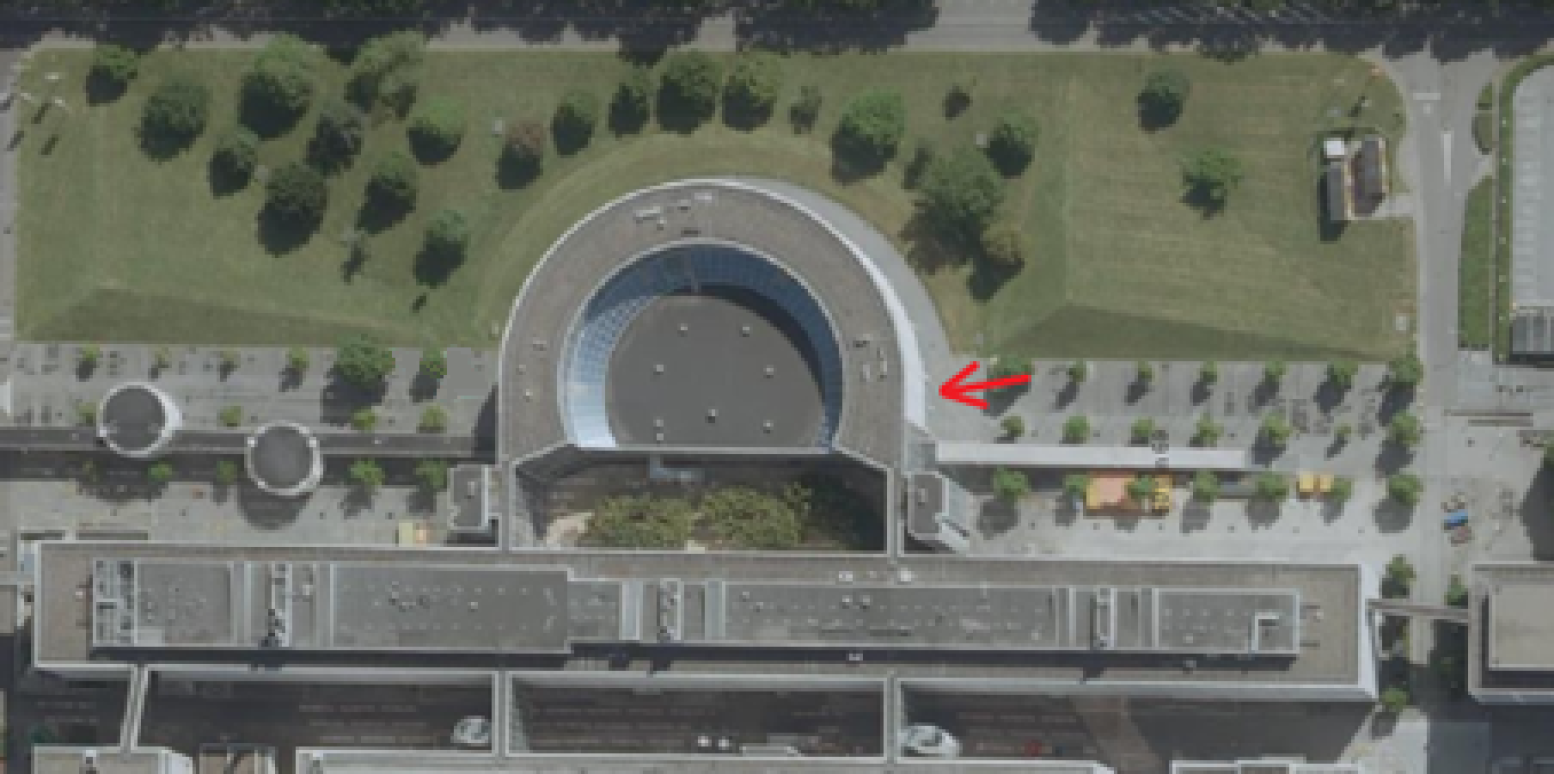
Waste room for glass, round corner UNS50 towards the south.
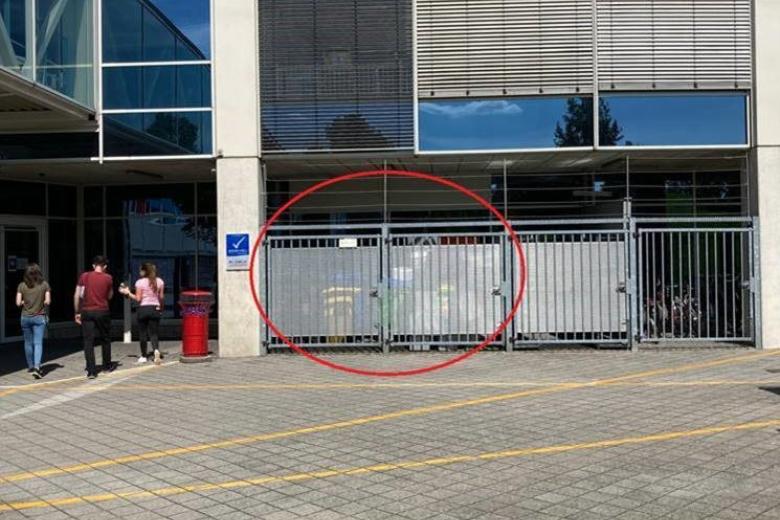
Styrofoam
This waste stream includes:
Clean, dry styrofoam.
- EPS styrofoam is mostly white.
- EPS is made up of small balls and is crumbly.
- These small balls can easily break off.
- EPS styrofoam can be recognised by the recycling symbol depicted on the right, with the number 6.
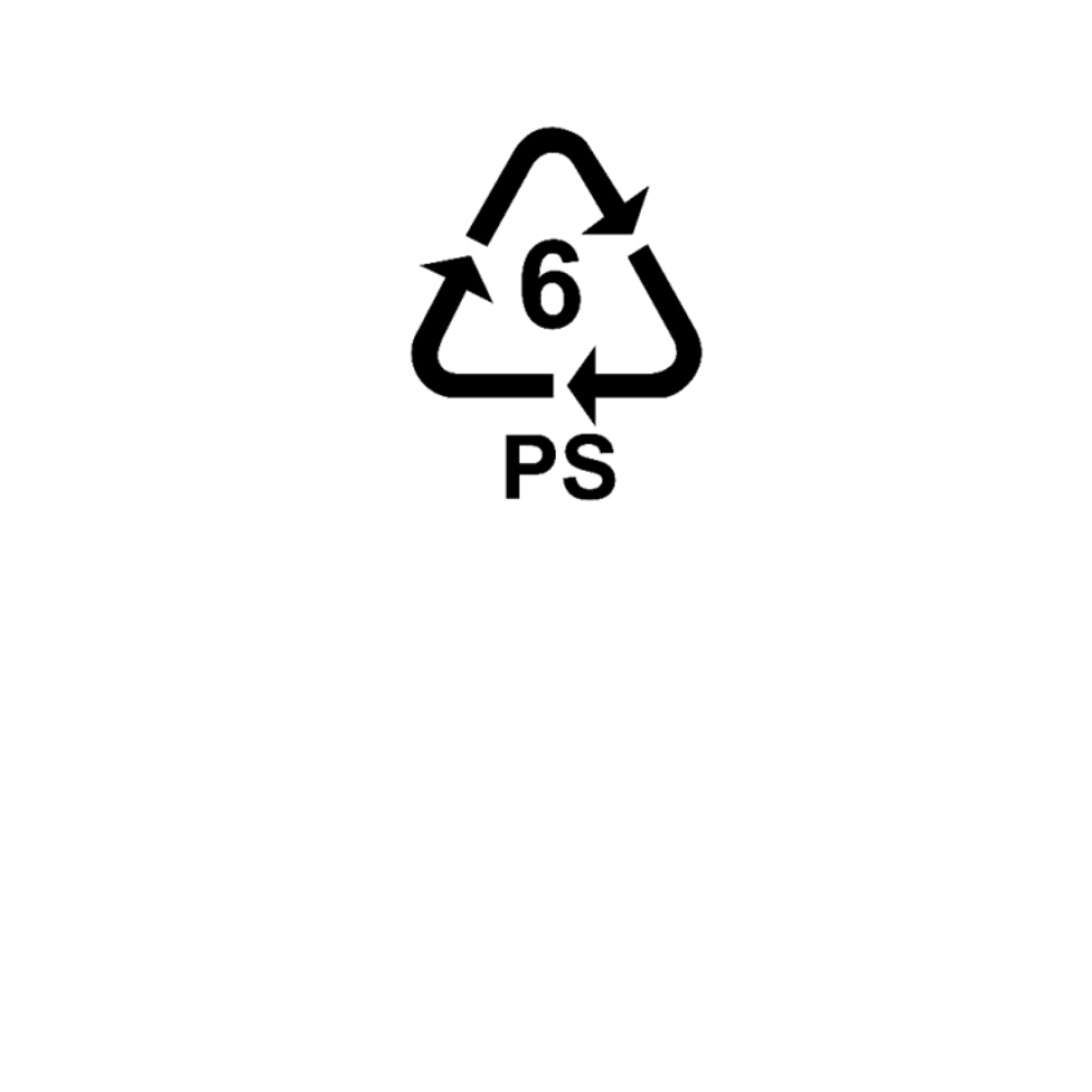
Excluded from this waste stream:
Foam products that are not made from EPS (these belong in residual waste), such as EPP and EPE. EPP (expanded polypropylene) and EPE (expanded polyethylene).
- EPP and EPE do not break apart or crumble.
- They can be recognised by the symbols on the right.

Collection methods:
Outside storage at Universiteitssingel 50: left round corner towards the south; see the arrow on the aerial photo below.
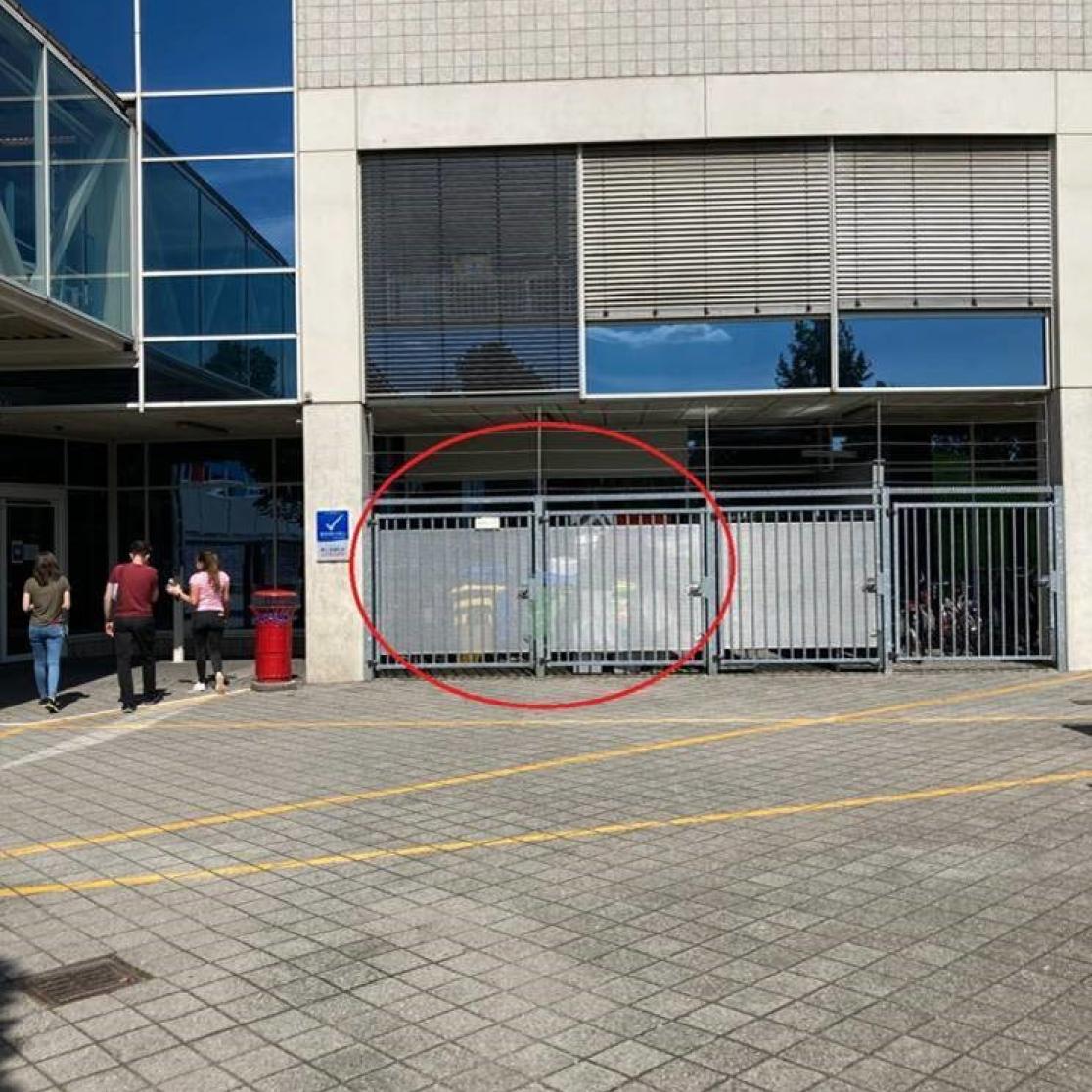
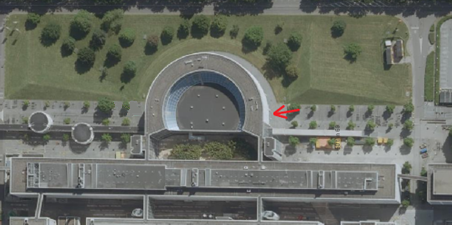
IDEE / IE
IDEE (FHML)
IDEE takes care of the registration of equipment within the Faculty of Health, Medicine and Life Sciences (FHML). All registered equipment and non-registered laboratory equipment must be reported to IDEE for collection.
Click here for more information and the necessary forms.
IE (FPN)
IE takes care of the registration of equipment within the Faculty of Psychology and Neuroscience (FPN). All registered equipment and non-registered laboratory equipment must be reported to FPN for collection.
You can do so via: fpn-ie@maastrichtuniversity.nl.
Electronics
This waste stream includes:
- All equipment with a plug socket or batteries (batteries must be removed and disposed of in the battery box).
- Permitted: Adapters, cables, circuit boards, LED lights.
Excluded from this waste stream:
- All equipment that must be reported to IDEE (FHML) or IE (FPN). For more information, please visit the link.
- Batteries (these must be disposed of in the battery box).
- Electronic information carriers containing confidential data, such as memory cards (these must be reported to the FS service point).
Collection methods:
Information on collection methods will follow here shortly. Electronic waste can be reported to the FS service point without any charge.
Batteries
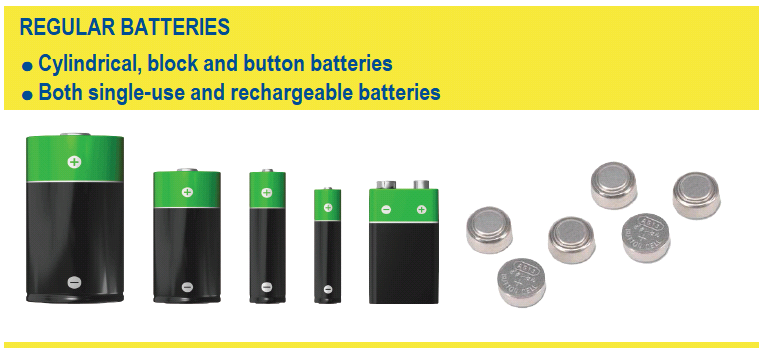

This waste stream includes:
- Disposable batteries and rechargeable batteries. Additional requirements:
- Lithium batteries: unprotected electrical terminals must be taped up.
- Place batteries that are connected together in a chain in a plastic bag after taping up the terminal ends.
- Removed batteries are batteries that were once built into devices or batteries that have been removed from their original (plastic) cases. These must also be taped up and packaged in plastic.
Excluded from this waste stream:
- Batteries may not be wet.
- Batteries may not be filled with fluid electrolytes.
- No lithium-sulfur or lithium thionyl chloride batteries.
- No damaged lithium batteries, i.e. dented or swollen batteries.
In the above cases, the batteries must be reported to the FS service point.
Collection methods:
Battery boxes are located at the receptions of UNS40 and UNS50.
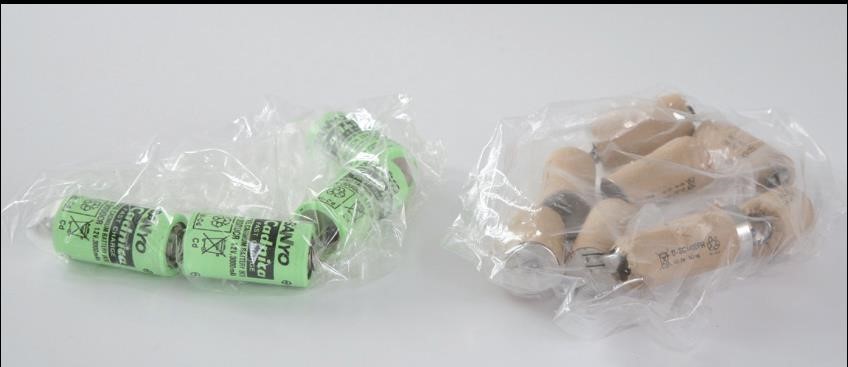
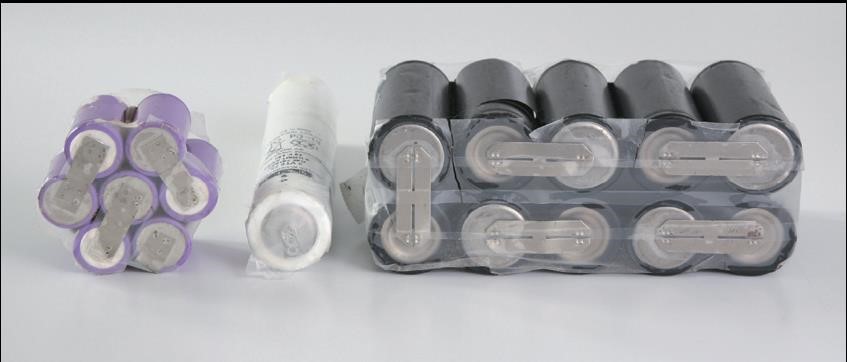
Small chemical waste from offices
This waste stream includes:
- Cartridges, toner reservoirs, Tipp-Ex bottles, thinner pots, ink pad boxes.
Excluded from this waste stream:
- Chemical waste from laboratories (this is collected within the laboratory).
- Loose powder or liquid (please place this in well-sealed packaging).
- Batteries (these belong in the battery box).
- Multifunctional toner (this is collected separately by Canon).
Collection methods:
Bins are placed next to some of the multifunctionals at UNS50.
Residual waste
This waste stream includes:
- Non-dangerous residual waste. The nature and composition of this waste stream is comparable to household waste.
Excluded from this waste stream:
- Dangerous waste.
- Construction waste.
- Recyclable waste for which UM has provided separate collection methods.
- Large objects, such as pallets, furniture or mattresses.
- (Vegetable) oil.
Vegetable, fruit and food waste (swill)
During the 4th quarter of 2024, additional bins will be installed in all UM buildings for the collection of vegetable, fruit and food waste.
This waste stream includes:
- Vegetables, fruits and other food waste, including meat scraps, fish scraps and bread scraps
- Egg shells
- Tea bags
Excluded from this waste stream:
- Packaging, such as compostable bags
- Paper and cardboard
- Garden waste
- Wood
- Animal by-products, originating from laboratories
This waste stream (swill) is not composted like organic waste, but fermented. Therefore, garden waste is excluded, especially woody materials such as branches.
Although compostable bags are excluded, they are used in swill collection. These are tolerated because there is no other suitable way to collect swill.
Coffee grounds from hot drinks machines are collected and processed as a separate waste stream.
Download poster
If you want to print and hang the poster yourself, you can download it from the following links: